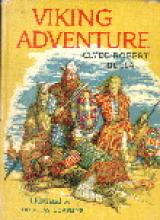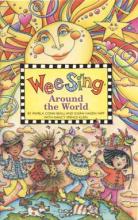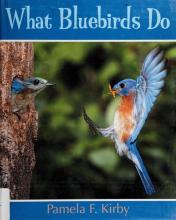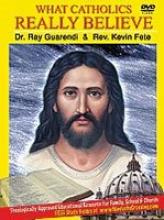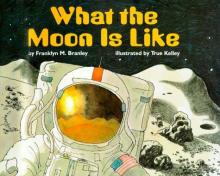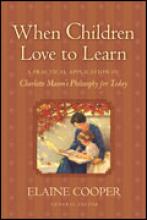No name
Up Periscope
This dramatic story gives an accurate picture of the thrills, frustrations and dangers of life aboard a submarine. Some interesting details of military history regarding conflicts between the Japanese navy and U.S. submarines help readers understand the importance of withholding information from the enemy during wartime (especially for members of the media!). The story gets pretty intense towards the end and would be best for ages 12 or 13 and up. Although the book is currently out-of-print, Scholastic paperbacks like this tend to show up frequently at rummage sales, used book stores and used sources on the Internet such as eBay.
Copyrights 1956/1960
Upbringing
Most parenting books seem to like to preach that their way is either God's way or the natural way or the positive way, leaving the reader to believe that if they do not raise their child in this manner they are either un-Christian, unnatural or negative. So it was very refreshing to come across Upbringing by James Stenson. Mr. Stenson has started two boys' high schools and been an observer of Catholic families for many years. His observations are based on his experiences with successful families. The proof is in the pudding, so to speak. In Upbringing, he puts together a list of characteristics that are common to families that have raised their children to become successful adults.
The book is a quick and easy read. It is designed for discussion with other families, but your spouse will do if this is not your cup of tea. Mr. Stenson begins with a discussion of character and the virtues/qualities that we would want to see in our children. (including the theological virtues - Faith, Hope and Charity and the cardinal virtues - prudence, justice, fortitude and temperance). He explains them in easy to understand language and then argues that a lack of these virtues in an adult boils down to immaturity or childishness. The opposites of these 7 virtues, faithlessness, despair, egoism, immature judgement, irresponsibility, softness and self-indulgence are all (with the exception of despair) vestiges of childhood. He links a lack of temperance in childhood with an inability to practice a religion that requires any sort of sacrifice in adulthood. He then goes on to list 7 reasons why there is such a lack of character formation in children today.
The second chapter profiles successful parents. He notes that the diversity among successful parents is striking. Some are energetic extroverts, some are quiet and mild-mannered, and all have personal faults and doubts. Nevertheless, they all have several traits in common.
In the 3rd chapter of the book, Mr. Stenson lists 18 Life Lessons in Reality. These are fun. They were quite a shock to me when I finally got out on my own. Things like: School is not Life, TV is not Life, Comfort and Convenience are a By-Product of a Successful Life, not its Purpose, etc.
I encourage you to obtain a copy of any of James Stenson's books. Other titles are Preparing for Peer Pressure, Successful Fathers, Preparing for Adolescence, and Lifeline, The Religious Education of Children.
Viking Adventure
The adventure soon takes an ominous turn as the ship encounters storms and the fears and dreams of the ship's owner, Halfred, who wants to turn back. The quarrel reaches a pitch between Gorm and Halfred, with murderous results that change Sigurd's life forever.
This book is one of many historical adventures written by Clyde Robert Bulla, and it is fast-paced and exciting like his others. Because of this, it might be a good book for an older reluctant reader. There is an interesting sub-plot about the value of the written word - at the beginning Sigurd refuses to learn to read and write because he doesn't see the point in his warrior culture, but in the end he changes his views when he has a valuable story to tell.
The terse style and fast pace is reminiscent of Norse sagas, and the lesson - that it takes hard work to become strong and skilled, and that even a warrior culture needs readers and writers - is a good one for a young person struggling to become literate. The reading level is probably about 2nd or early 3rd grade. I recommend this book for children ages 6 and up - a younger child could probably understand it, but might be upset by the fact that several main characters die during the course of the story.
Wee Sing: Around the World
This audio tape or CD and booklet take you around the world, continent by continent, by introducing you to favorite folks songs or children's songs from each country. Someone from each country introduces themselves in their own language and then in English and the song is sung in each language as well. The booklet includes all the words to the songs in the native language and English, simple piano notation and guitar chords. There are charming illustrations including each country's flag. You'll also find a little description of each country. This has been our family's very favorite tape in the Wee Sing series.
What Bluebirds do
We picked a full bag of mostly new picture books from the library as we don't visit it as often as during the school year. Several new publications were examined by my review team – our children. Some were bold, creative, large and colorful. Fiction, informational, biographies: we read many different books over a number of days. In my mind as I hear their comments and listen or watch their reading enjoyment I run my own elimination process.
A simple, quiet, gentle book was the clear winner this time, beating all of its "louder" competitors: What Bluebirds Do, by Pamela Kirby. It won all of our hearts with the true photographic story of a pair of bluebirds in the backyard of the author's house. Beautiful photography, a list of resources, and a careful description of the bluebirds' life are combined into the most delightful nature-book we have come across in a while!
What Catholics Really Believe
13 - 1/2 hour episodes on DVD
What the Moon is Like
This book covers the appearance of the moon from the earth (in regards to its surface rather than its changes over the month), the explanations people have given for the appearance of the moon (man in the moon, etc.) and why it really looks that way. It covers many interesting details about the surface of the moon (including a simple map of the moon's surface marked with the locations of moon landings), its atmosphere, the length of day and night on the moon (and the extreme temperature difference between the two), the difference in gravity on the moon, etc. The book is fully illustrated and quite engaging although I think some of the ideas on how the moon was formed are still open for discussion. A final page offers a few simple moon-related projects and a few related websites for further information.
First published (copyright) 1963. Many later editions.
What's The Deal?
National Geographic published some longer, generously illustrated non-fiction picture books, and this is one of them. A great aid to any homeschool's History curriculum. We have picked up several different titles from the library like this one. I, for one, learned a lot! From their site:
This entertaining saga brings a legendary land deal to life. Over 60 reproductions of art from the period, a cast of characters, maps, a timeline, endnotes, a bibliography, and index give young readers all the resources they need to understand the period in which the Purchase took place.


